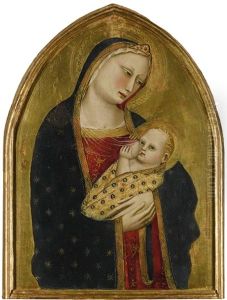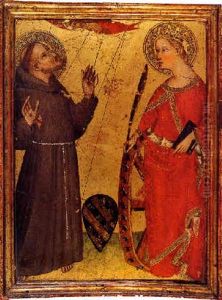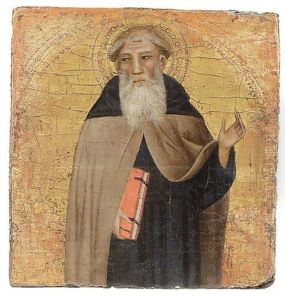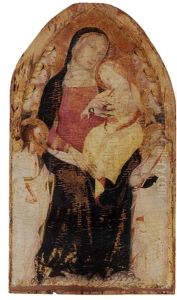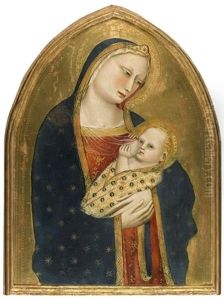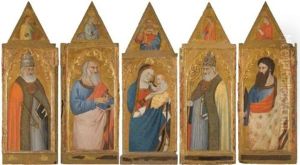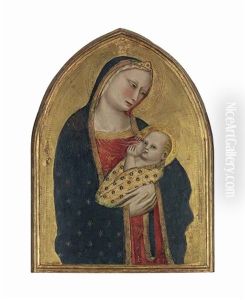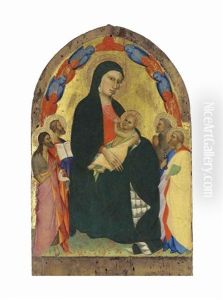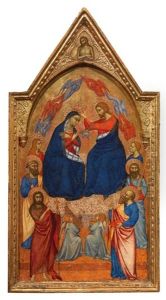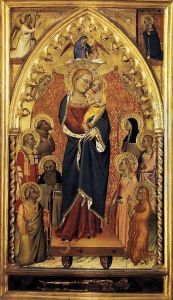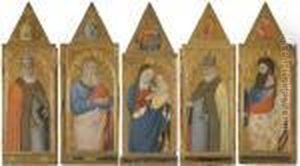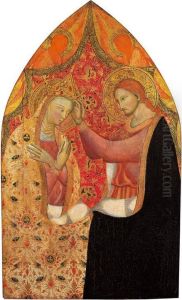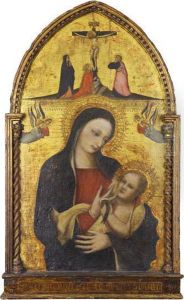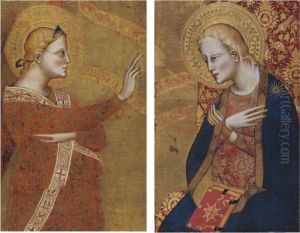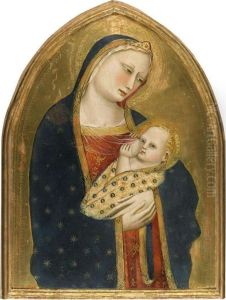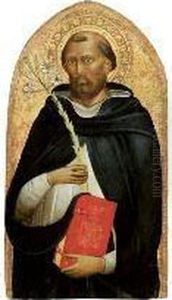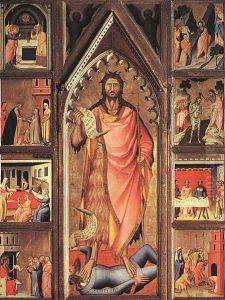Giovanni del Biondo Paintings
Giovanni del Biondo was an Italian painter who was active during the second half of the 14th century, within the period art historians refer to as the Late Gothic. His exact birth and death dates are not precisely known, but he is thought to have been born around 1356 and to have died around 1399. He was a contemporary of other important Italian artists such as Andrea di Cione, known as Orcagna, and his brother, Jacopo di Cione.
Giovanni del Biondo's work is characterized by its religious content, as was typical for the time, and he was primarily known for his altarpieces, frescoes, and other ecclesiastical commissions. His style is marked by the use of vivid colors, elaborate gold leaf ornamentation, and a strong narrative element within his compositions. Despite the fact that little is known about his training or early career, it is clear that he was deeply influenced by the prevailing Gothic art of his time, which was dominated by the Byzantine tradition, yet he also began to incorporate more naturalistic elements that would later flourish during the Renaissance.
Most of Giovanni del Biondo's works are found in Florence, Italy, where he worked for most of his career. His notable works include the polyptych of San Giovanni Gualberto for the church of San Pancrazio, now in the Museo di San Marco, Florence, and the 'Storie della Vergine' in the church of Santa Maria degli Angeli. His work was appreciated for its devotional intensity and its decorative quality, which enriched the spiritual atmosphere of the churches for which he painted.
Despite his contributions to the Late Gothic style, Giovanni del Biondo remains a somewhat obscure figure in art history, overshadowed by the giants of the early Renaissance who followed him. However, his paintings are still of interest to art historians and critics for their representation of the stylistic transition from the medieval period to the early Renaissance. His legacy lies in his ability to capture the religious fervor of his time while hinting at the evolving taste for naturalism and humanism that would come to define the subsequent era in European art.
